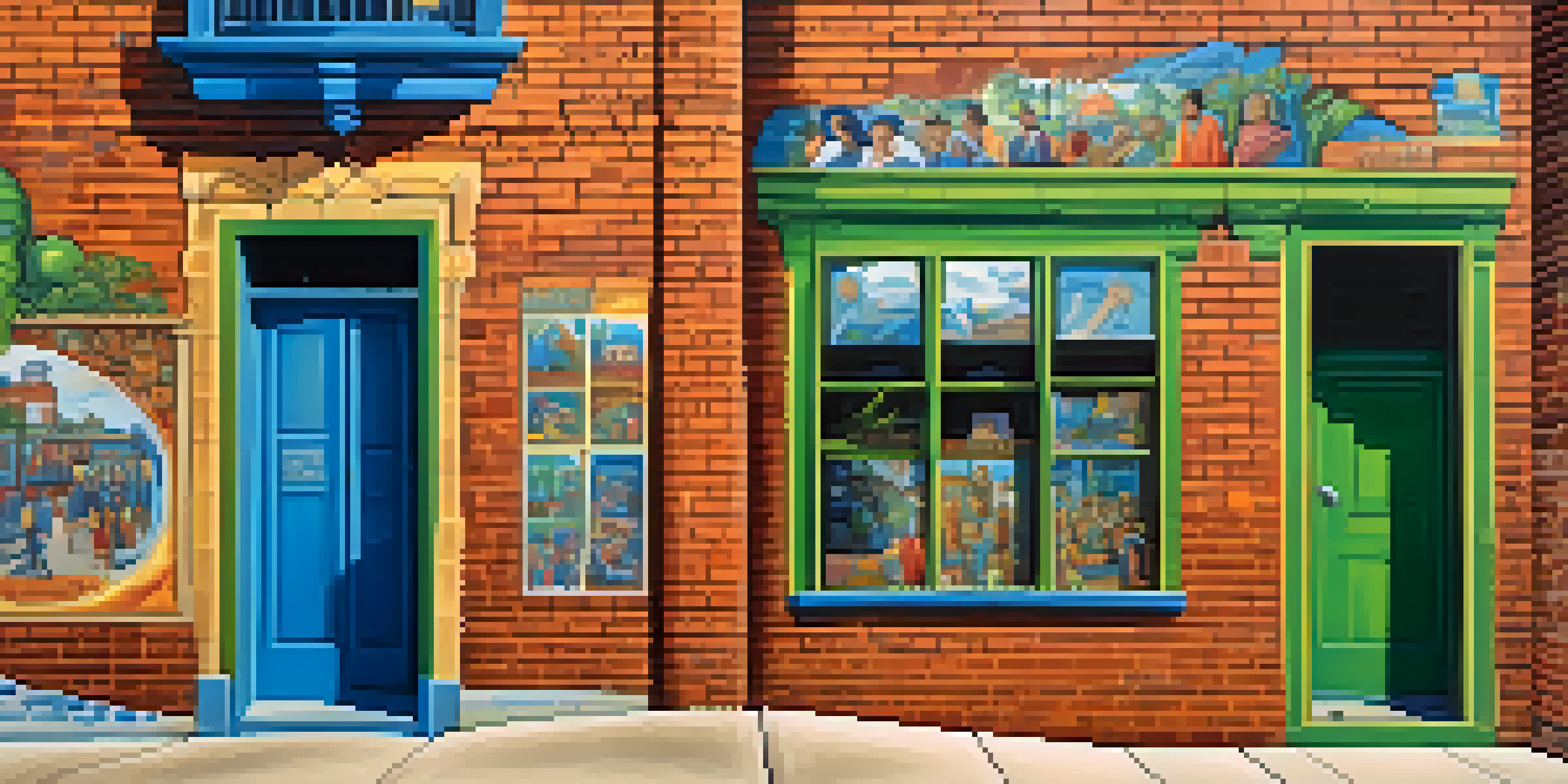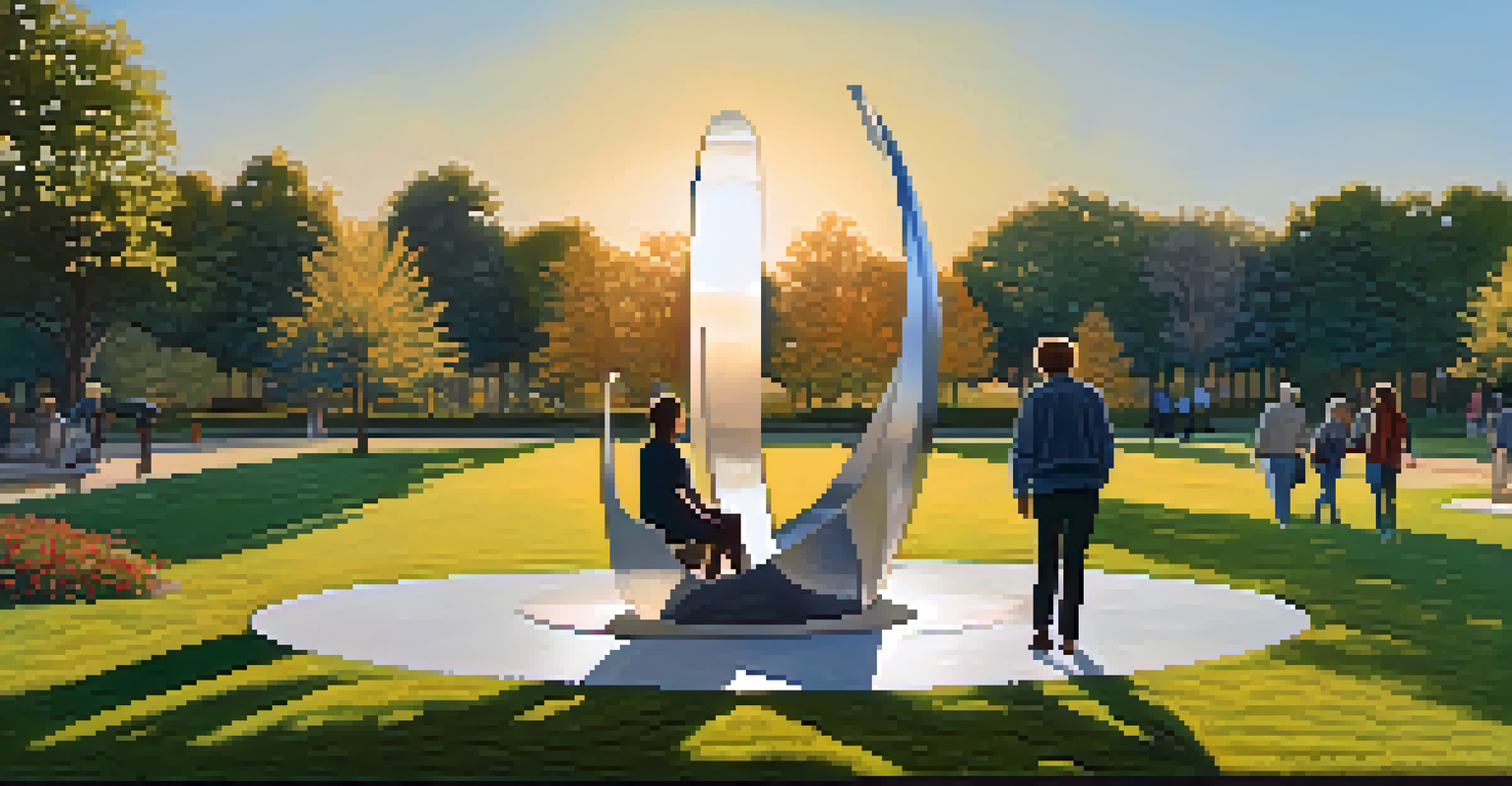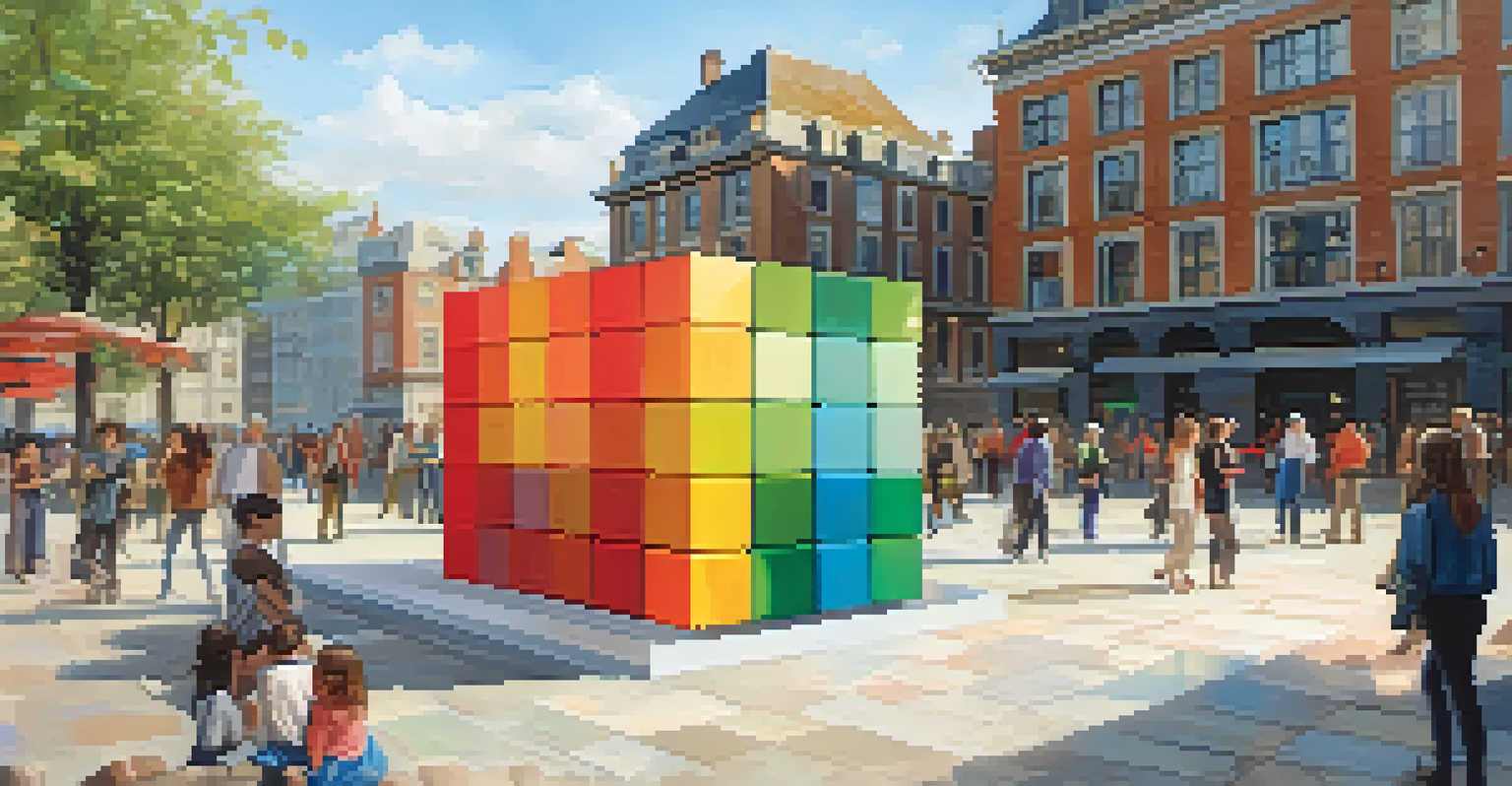The Evolution of Public Art in Urban Landscapes Over Time

Defining Public Art: A Brief Overview
Public art encompasses a wide range of artistic expressions located in public spaces, designed to be accessible to all. It's not just about sculptures or murals; it includes installations, performances, and more. These artworks often reflect the culture, history, and values of the community they inhabit, making them vital to our urban environments.
Public art is not a luxury; it is a necessity for a beautiful and functional city.
Historically, public art has served various purposes, from commemorating historical events to beautifying and humanizing urban landscapes. In essence, it acts as a bridge between art and the public, fostering a sense of belonging and identity. This connection is key to understanding how public art has evolved over time.
As we delve into the evolution of public art, we can see how societal changes, artistic movements, and urban development have all played significant roles. Understanding these influences helps us appreciate the dynamic relationship between art and the urban environment.
The Roots of Public Art in Ancient Civilizations
Public art has deep roots in ancient civilizations, where monuments and sculptures were often created to honor deities, leaders, or significant events. For instance, the grand statues of Ancient Greece and Rome, like the Colossus of Rhodes, served both decorative and symbolic purposes in public spaces. These early forms of public art were crucial in establishing civic pride and cultural identity.

Additionally, in many ancient cultures, art was integrated into the architecture of public spaces, making it an inseparable part of urban life. Temples, plazas, and amphitheaters were adorned with artistic elements, showcasing the community's values and aspirations. This blend of art and architecture laid the groundwork for future developments in public art.
Public Art Connects Communities
Public art serves as a vital bridge between artistic expression and community identity, fostering a sense of belonging.
As societies progressed, the role of public art evolved, but its significance in shaping urban landscapes remained constant. The enduring legacy of these early artworks continues to influence contemporary public art practices today.
Renaissance and the Rise of Civic Art
The Renaissance marked a significant turning point for public art, as artists began to explore new techniques and ideas. This period saw the emergence of civic art, where works were commissioned not just for religious purposes but to celebrate civic pride and human achievement. Cities like Florence and Rome became showcases for magnificent sculptures and grand public buildings.
Art is a reflection of society, and public art can help us see our world through new eyes.
Artworks like Michelangelo's David and Bernini's fountains were not only aesthetically pleasing but also served to elevate the status of the city and its citizens. They encouraged public engagement, turning urban spaces into vibrant cultural hubs. This shift highlighted the desire for art to be a part of everyday life, accessible to all.
As civic pride grew, so did the ambition behind public art projects. This era solidified the idea that public art could be a reflection of a community's values and aspirations, setting the stage for future movements.
The Industrial Revolution: Public Art in a Changing World
The Industrial Revolution brought rapid urbanization and a significant shift in the function of public art. As cities expanded, the need for artworks that could provide a sense of identity and community became more pressing. Statues and monuments were erected to commemorate historical figures and events, often in response to the changing social landscape.
During this time, public art also began to reflect the struggles and triumphs of the working class. Artists started to use public spaces as platforms to address social issues, pushing for change and awareness. This shift highlighted the role of art as a tool for social commentary and community engagement.
Historical Evolution of Public Art
From ancient monuments to modern installations, public art has continually adapted to reflect societal changes and cultural values.
In many ways, the Industrial Revolution shaped public art into a more inclusive and diverse form, paving the way for future artists to explore new themes and mediums. The interplay between urbanization and public art remains a defining characteristic of modern cities.
Modernism and the Break from Tradition
The early 20th century saw the rise of Modernism, which challenged traditional notions of art and aesthetics. Artists began to break away from classical forms, experimenting with abstract, minimalist, and conceptual art. This shift was evident in public spaces, where traditional sculptures were replaced with innovative installations that encouraged viewers to engage with the environment in new ways.
Modernist public art often aimed to provoke thought and invite dialogue, rather than simply beautify urban landscapes. This period saw the introduction of large-scale murals, kinetic sculptures, and interactive installations, which transformed how we perceive and interact with public art. The goal was no longer just visual appeal but a meaningful engagement with the audience.
This evolution marked a significant departure from the past, allowing public art to reflect contemporary issues and diverse perspectives. The influence of Modernism continues to resonate in today's urban art scene, where creativity knows no bounds.
The Role of Community in Contemporary Public Art
In recent decades, community involvement has become a central theme in the creation of public art. Artists are increasingly collaborating with local residents to ensure that the artworks resonate with the community’s identity and experiences. This participatory approach not only fosters a sense of ownership but also enhances the relevance of the art itself.
Murals, for example, often narrate local histories or celebrate cultural diversity, making them powerful tools for community expression. Projects like community gardens or interactive installations encourage participation, turning public art into a shared experience. The focus has shifted from top-down commissioning to grassroots initiatives.
Future Trends in Public Art
Advancements in technology and a focus on inclusivity are shaping the future of public art, making it more interactive and relevant.
This evolution reflects a broader trend in contemporary art, where inclusivity and collaboration are valued. The relationship between public art and community continues to grow, transforming urban landscapes into vibrant, living canvases.
The Future of Public Art: Trends and Innovations
As we look to the future, public art is poised to evolve further with advancements in technology and changing societal values. Digital art, augmented reality, and interactive installations are increasingly becoming part of the urban landscape, offering immersive experiences that engage audiences in new ways. These innovations challenge traditional boundaries and redefine what public art can be.
Moreover, issues like sustainability and social justice are becoming integral to public art projects. Artists are exploring themes that address environmental concerns and advocate for marginalized voices, ensuring that public art remains relevant in a rapidly changing world. This trend reflects a growing awareness of the role art plays in shaping social change.

The future of public art promises to be dynamic and inclusive, embracing a wide array of voices and mediums. As urban landscapes continue to evolve, so too will the art that populates them, fostering connection and enhancing the human experience.